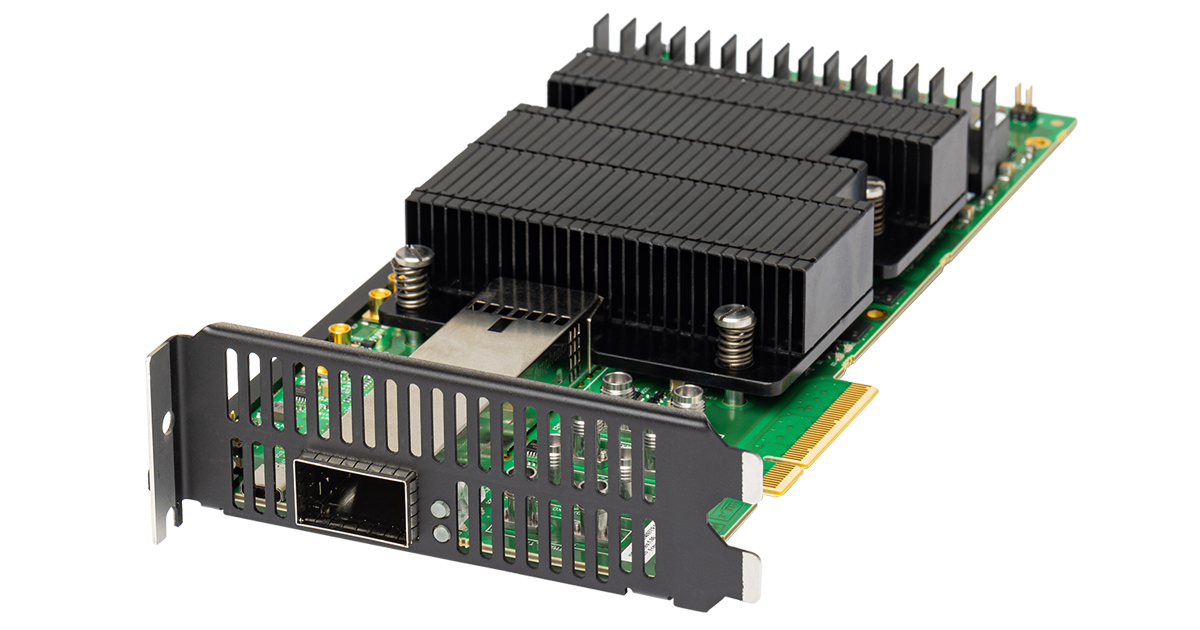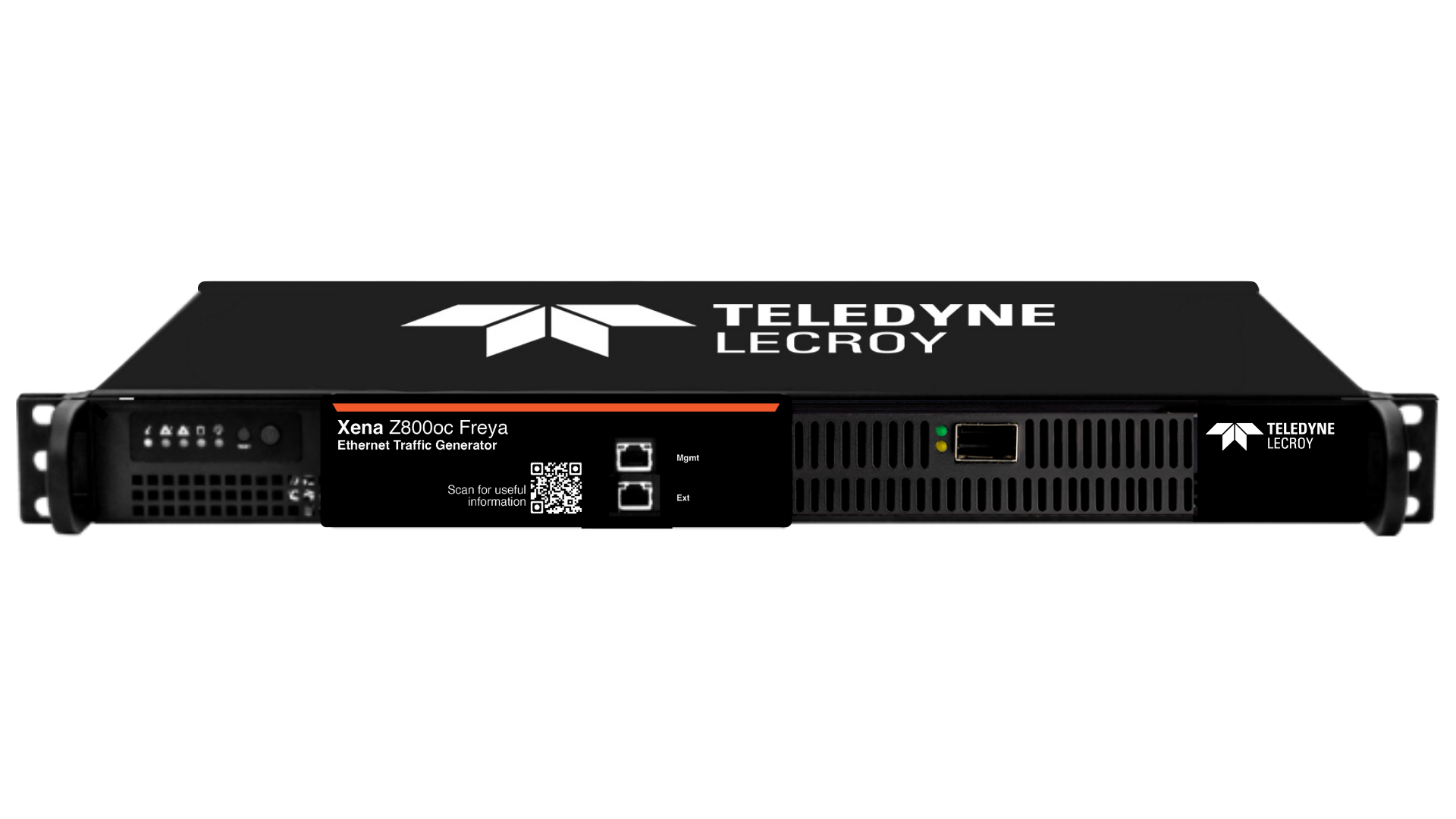Award Winning Solutions
Xena has won multiple global awards for price/performance and technical innovation. Learn more.

Technical Expertise
Copyright © 2009-2024 Teledyne LeCroy Xena ApS, Denmark

The Z800o Freya test module supports these Ethernet network speeds – 800GE, 400GE, 200GE, and 100GE and 50GE using 56/112G SerDes (PAM4 56/112G).
The module supports OSFP-compatible transceivers and the following speeds: 1x800GE, 2 or x400GE, 4 or 2x200GE, 8 or 4x100GE or 8x50GE
Z800o Freya is a highly versatile solution for performance and functional testing of network infrastructure and Ethernet equipment including switches, routers, NICs, TAPs, packet-brokers, and backhaul platforms.
Z800o Freya is unique on the market with its ability to test up to 800GE with 112G SERDES (PAM4 112G) on OSFP optics and DACs and perform Auto-Negotiation and Link Training (AN/LT). Received signals can be analyzed the advanced signal integrity view, which provides visual information on the quality of the signal.

OSFP: 800G, 400G, 200G, 100G, 50GE Ethernet
1x800G, 2x400G, 4x200G and 8x100G and 50G Ethernet
OSFP cage:
112G SerDes:
1 x 800GE or PAM4 802.3df (D2.0) /Consortium**
2 or 1 x 400GE or PAM4 802.3ck or
4 or 2 x 200GE or PAM4 802.3ck or
8 or 4 x 100GE PAM4 802.3ck
56G Serdes:
1 x 400GE PAM4 802.3bs or 802.3cd or
2 x 200GE PAM4 802.3cd or
4 x 100GE PAM4 802.3cd or
8 x 50GE PAM4 802.3cd
Power capacity: 20W (XenaB2400) / 25W (XenaCompact)
** As defined by Ethernet Technology Consortium
Auto-negotiation: IEEE 802.3 Clause 73 and ETH. 400G/800G specifications
Link training: IEEE 802.3 Clause 136 and 161
RS-FEC (Reed-Solomon) (544,514,t=15), IEEE802.3 Clause 119
RS-FEC (Reed-Solomon) (544,514,t=15), IEEE802.3 Clause 134
RS-FEC (Reed-Solomon) (544,514,t=15), IEEE802.3 Clause 161 for 100GBASE
1 x OSFP
Link state, FCS errors, pause frames, ARP/PING, error injections, training packet
All traffic: RX and TX Mbit/s, packets/s, packets, bytes
Traffic w/o test payload: RX and TX Mbit/s, packets/s, packets, bytes
Configurable from 16 to 56 bytes, default is 20B (12B IFG + 8B preamble)
Ability to adjust the effective line rate by forcing idle gaps equivalent to -1000 ppm (increments of 10 ppm)
From -400 to 400 ppm in steps of 1 ppm (shared across all ports)
Configurable linear or step sweep +/- 400 ppm
Supported (configurable IP and MAC address per port)
System is fully field upgradeable to product releases (FPGA images and software)
Enable/disable of optical laser or copper link
IGMPv2 continuous multicast join, with configurable repeat interval
Two real-time histograms per port. Each histogram can measure one of RX/TX packet length, IFG, or Latency distribution for all traffic, a specific stream, or a filter
To a maximum of 800KHz (actual speed depends on medium support)
Both Passive and Active electrical cables are supported:
*Length might variate dependent on vendor
PRBS-13Q, PRBS-31Q, SSPRQ test pattern (IEEE 802.3 Clause 120.5.11.2.3) and Square Wave (IEEE 802.3 Clause 120.5.11.2.4).
PRBS pattern loss, link sync loss
Bit-errors: seconds, count, rate
User-defined skew insertion per Tx virtual lane, and user defined virtual lane to SerDes mapping for testing of the Rx PCS virtual lane re-order function
Relative virtual lane skew measurements (up to 2048 bits)
Corrected Bit error, PreFEC BER
Total corrected FEC symbols, Total uncorrected FEC symbols, Estimated Pre-FEC BER, Estimated Post-FEC BER, Pre-FEC Error Distribution Graph
Single short or repeatable link down events with ms precision
Repeatable error inject periods at PMA layer with ms precision
Supported in Layer 1/ANLT mode:
Tx Transmit Equalization Controls
Rx Receive Equalization Controls
256 (wire-speed)
Each stream can generate millions of traffic flows using field modifiers
Wire-speed packet generation with timestamps, sequence numbers, and data integrity signature optionally inserted into each packet.
TX Mbit/s, packets/s, packets, bytes, FCS error
Burst size and density can be specified. Uniform and bursty bandwidth profile streams can be interleaved
24-bit header field modifiers with incremental, decremental, or random mode. Eachmodifier has configurable bit-mask, repetition, min, max, and step parameters. Eight 24-bit modifiers can be configured per stream
Fixed, random, butterfly, and incrementing packet length distributions from 56 to 16k bytes
Repeated user specified 1 to 18B pattern, an 8-bit incrementing pattern
Undersize length (56 bytes min) and oversize length (12288 bytes max.) packet lengths, injection of sequence, misorder, payload integrity, and FCS errors
Ethernet, Ethernet II, VLAN, ARP, IPv4, IPv6, UDP, TCP, LLC, SNAP, GTP, ICMP, RTP, RTCP, STP, MPLS, PBB, or fully specified by user
2016 (wire-speed)
Real-time reporting of statistics and latency, loss, payload integrity, sequence error, and misorder error checking
Jitter (Packet Delay Variation) measurements compliant to MEF10 standard with 1 ns accuracy
Jitter can be measured on up to 32 streams
±16 ns
1 ns (Latency measurements can calibrate and remove latency from transceiver modules)
Per filter: RX Mbit/s, packets/s, packets, bytes
Freeze or Auto tune
All traffic, stream, FCS errors, filter match, or traffic without test payloads
16 – 12288 bytes
64 kB
4096 packets (any size)
TBA
2.31 lbs (1.05 kg)
Operating Temperature: 10 to 35º C
Storage Temperature: -40 to 70º C
Humidity: 8% to 90% non-condensing
FCC (US), CE (Europe)
Xena uses high-quality 112Gbps-capable electrical connectors on Freya modules foroptimal signal integrity and performance. However, all connectors experience wear wheninserted, resulting in decreased signal integrity over time. The specification below is theminimum number of insertions where optimal signal integrity is guaranteed:
Connector for OSFP:
Minimum number of guaranteed insertions: 500 cycles
This module is only supported by the B2400 / Val-C12-2400 and the XenaCompact chassis
This module requires two slots in the B2400 / Val-C12-2400 chassis